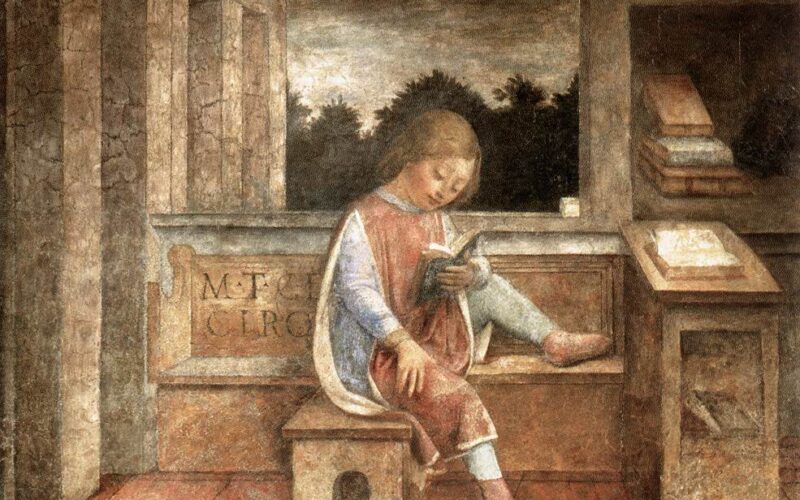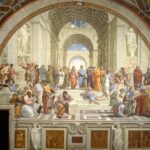Un giovane immerso nella lettura di Cicerone: Vincenzo Foppa e l'eco della rinascita
The article explores Vincenzo Foppa’s fresco, a masterpiece from 1464 commissioned for the Medici Bank in Milan and now housed in the Wallace Collection in London. This artwork becomes a focal point for discussing the formative power of history and the cultural context in which it was created.
In the midst of the Renaissance, there was a growing attraction to the classical heritage, ranging from fine arts to philosophy. Unlike mere allegorical interpretation, the rediscovery of classical texts was intended as a vehicle to understand ancient civilization and thus contribute to the post-medieval cultural renewal, a concept that could certainly be the subject of further debate.
In the fresco, a young man in evidently prosperous attire is deeply engrossed in reading. The setting, though simple, is enriched with architectural details and a view of the garden, creating an eloquent dialogue between human ingenuity and natural majesty. During that period, architecture was considered a means to express ideals of perfection, embodied in the concept of the Golden Section, symbolizing the interconnection between man, nature, and the universe, and by extension, between the divine and the human.
A Latin caption on the bench behind the boy reveals that the book in question is a work of Marcus Tullius Cicero, or perhaps even suggests that the young man himself could be Cicero, although he is dressed in a manner consistent with the artist’s era. Here emerges a connection between the eternal wisdom of the classics and contemporary reality, creating a temporal resonance throughout the painting. The source of diffused light and the absence of vanishing points contribute to this sense of atemporality.
But what is the young man reading from Cicero? We cannot say for certain, but it is intriguing to hypothesize that the young man is reading ‘De Oratore’, and in particular about the concept that history is the “teacher of life,” as eloquently expressed in the text “Historia vero testis temporum, lux veritatis, vita memoriae, magistra vitae, nuntia vetustatis.”
Thus, this fresco becomes a stimulus for a broader reflection on the state of education and culture today. The importance of history, often reduced to mere captions in a school or media context, cannot be underestimated. As the proverb says, to ignore the past is to condemn oneself to repeat it.
Today, it’s likely that a teenager would be portrayed scrolling through a smartphone screen, indiscriminately ‘liking’ posts, sometimes on false news that they won’t be curious to delve into. This image starkly contrasts with the Renaissance ideal that exalts reading Cicero as a vehicle of wisdom for future generations.
Removing history and memory from the social fabric not only impoverishes culture but also triggers a loss of respect for nature. In this sense, artists, philosophers, and scientists have sought to show a symbiosis between humanity, nature, and culture.
In conclusion, the adage that “art will save the world” might have a foundation, provided that contemporary art does not deny its historical antecedents.













Ho insegnato Storia dell’Arte per 35 anni. Ho sempre fatto approfondito storicismo prima di affrontare un argomento analizzando il periodo storico, sociale, religioso nel quale l’artista o la corrente avevano preso vita. Per me era folle parlare di qualsiasi forma d’arte senza contestualizzarla.
Il suo splendido articolo mi ha esaltata, ho ritrovato me stessa e la religiosità di quel metodo di insegnamento, che è sempre stato il mio, che è l’unico logico e razionale.
Ogni artista e qualsiasi opera, non sono anche, oltre alla genialità, prodotto del tempo in cui hanno preso vita?
A volte penso al divino Lionardo,come veniva chiamato allora, cosa creerebbe adesso con la sua geniale ansia sperimentale e inventiva?
Sono elettrizzata per quanto ho letto, riletto e condiviso.
Non ho parole per ringraziarla.
Grazie per le sue belle parole, e sopratutto per la sua passione verso l’arte, la storia… insomma, per tutta la cultura che non è altro che la somma di cioò che hanno fatto e pensato chi ci ha preceduto.